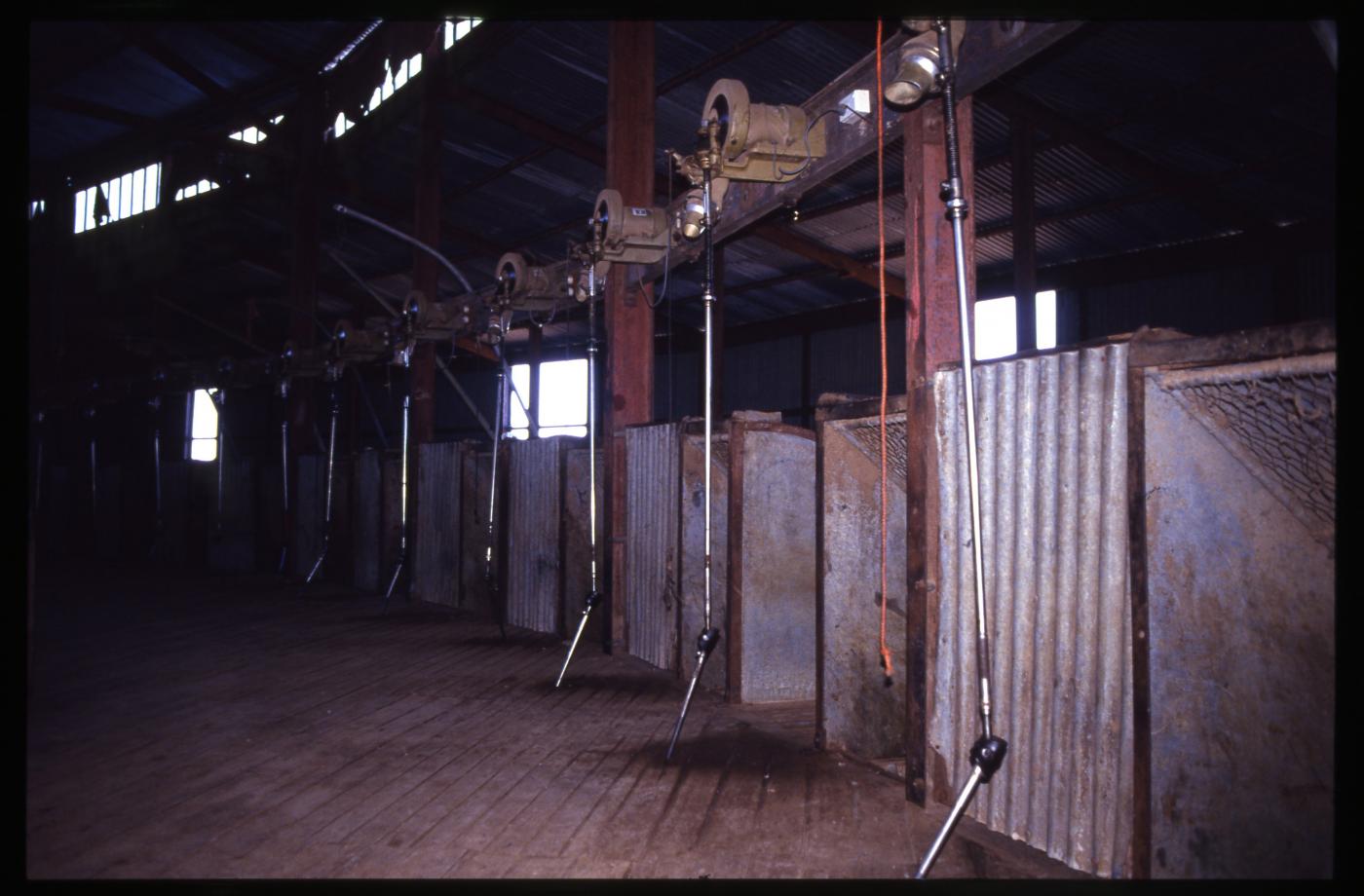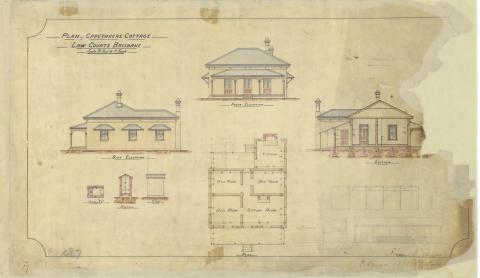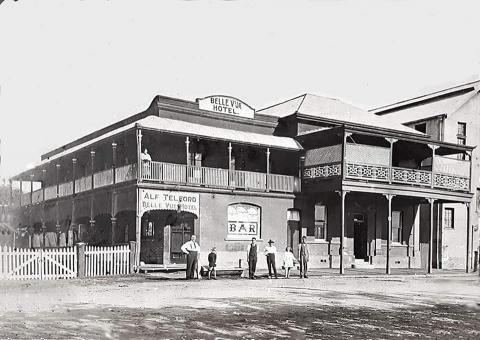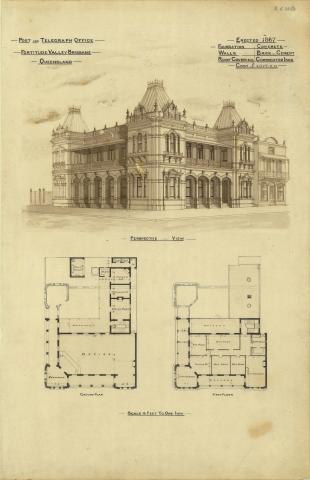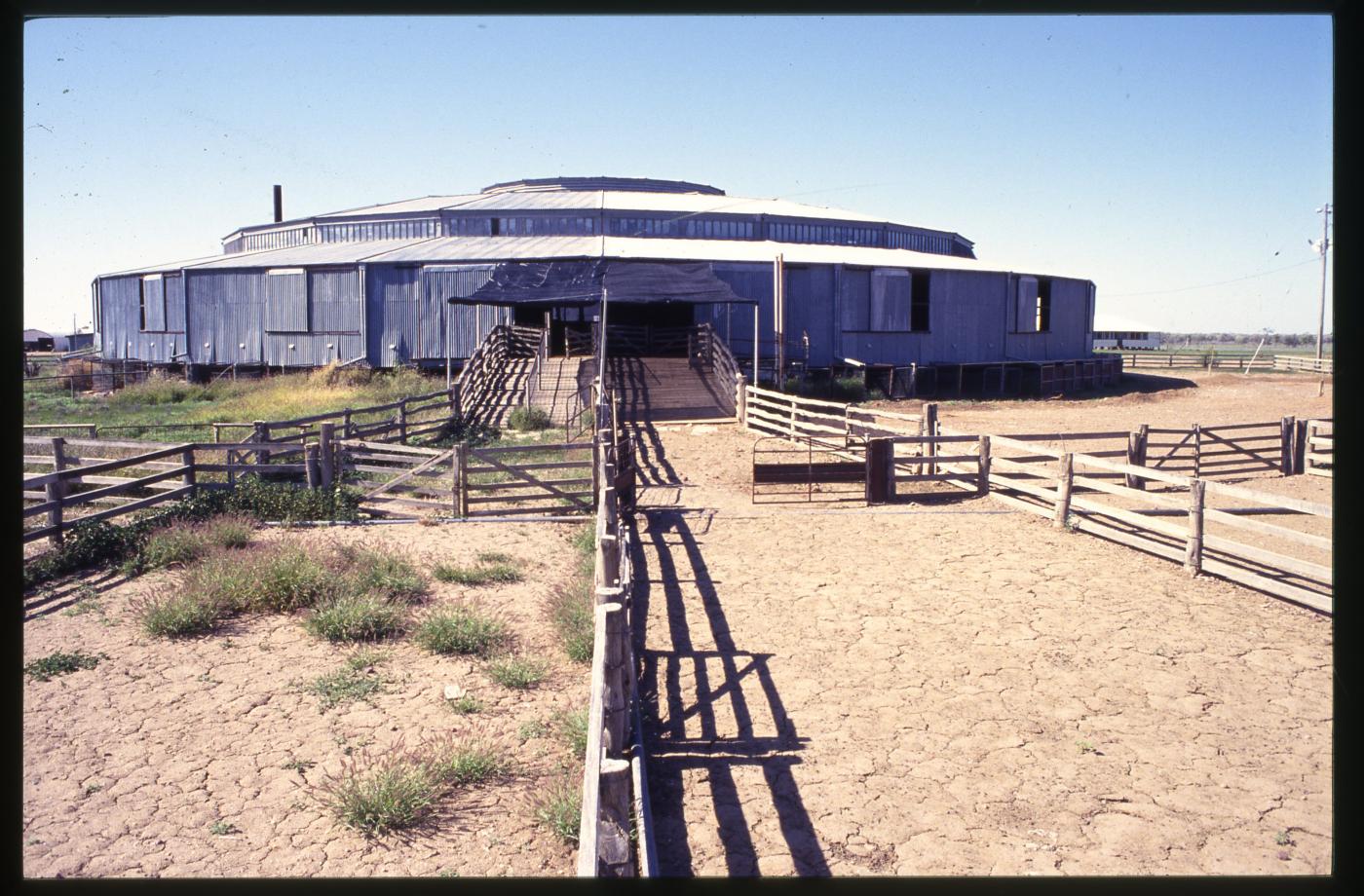
- News of the day
-
Tuesday 24 September 1912, page 5
FIRE ON ISIS DOWNS.
WOOLSHED DESTROYED.
1200 BALES WOOL BURNT.
By Telegraph.
BLACKALL. September 23.
A disastrous fire occurred at Isis Downs Station early yesterday morning. The woolshed and 1200 bales of wool were totally destroyed. The origin of the fire is unknown. It was discovered at one o'clock, but it then had so great a hold that all efforts to extinguish it proved unavailing. The police from Isisford are on the scene.
BARCALDINE, September 23.
Some men camped near Isis Downs wool-shed observed just after midnight on Saturday that the shed was on fire. It was impossible to do anything to save the place as the fire had a good hold. Only seventy-nine bales of Isis Downs wool and some twenty bales of Gowan Hills wool were got out. The shed, woolroom, and all the surrounding buildings were totally destroyed, including from 1100 to 1200 bales of wool, which is still burning. It is impossible to get near it owing to the intense heat. Shearing was only completed on Friday last. No idea can be formed as to how the fire originated.
Further details show that the alarm was given by Mr. Seaforth McKenzie, who was sleeping close to the shed and was suddenly awakened by a roar like that made by a motor car when travelling. About fifty men were immediately on the scene, but nothing could be done owing to the strong breeze blowing. The fire ran rapidly through the buildings, which were completely destroyed. The shed was 170 ft. long and 80ft. broad and was splendidly built and equipped with electric, light and all modern conveniences. The woolroom adjoining was 80 ft. by 30 ft. The value of the wool is estimated to exceed £20,000. Messrs. Clarke and Whiting, the owners, must be heavy losers, although probably there is some insurance.
LONGREACH, September 23.
Sub-inspector McGrath received a telegram today stating that Isis Downs woolshed was burnt down on Saturday night and 1040 bales of wool stocked there-in destroyed. The woolshed was very complete, there being provision for fifty shearers. Last year a large woolroom was erected and an electric light plant installed. The damage cannot be far short of £30,000.
- Background
-
The current Isis Downs Woolshed was completed in 1914. A prefabricated steel structure clad with corrugated iron, the shed was designed by Kay, MacNicol and Company Engineers for the then property owners, Sir Rupert Clarke and R S Whiting. Although smaller than the previous shed that had burnt down, the current shed's design is unique, creating a large semi-circular internal space.
Isis Downs was one of the first properties to be established in the Isisford District of far west Central Queensland. The initial lease commenced on 1 January 1867 and was held by Charles Lumley-Hill, W St John Holberton and W B Allen. The run was named after the Isis River in England, which is actually the upper reaches of the Thames River. Following the taking up of pastoral properties throughout the area, a town was founded by William and James Whitman in 1877 to provide essential services for the district. It had various early names including Whittown, Wittown or Whittington, but in 1897 was officially named Isisford, as it was near to a ford and not far from Isis Downs Station.
By 1910 Isis Downs had grown to over 200,000 hectares and carried a similar number of sheep. At that time the shearing shed on Isis Downs was a rectangular-shaped timber and corrugated iron structure with a central arched spine. Erected in the late nineteenth century, it contained 100 shearing stands and was larger than the current shed, but it was destroyed by fire in September 1912, immediately after the close of the shearing season.
By December 1912 the owners had commissioned Melbourne engineers Kay, MacNicol and Company to design a new shearing shed. A number of designs were considered but by late December the current structure was chosen as the "cheapest and simplest form of construction". The designers argued that "the use of one big pillar 30 feet above the ground and sunk to about five feet below, would provide a clear space of about 70 feet to cover shearing board, tables, bins etc". The design allowed for 52 shearing stands around the semi-circle, with the sheep-yards on the immediate exterior. On the flat, far side of the building were the wool bins and presses. A separate engine room provided its own electricity, with the lighting supplemented by clerestory windows. Large, rectangular ventilation shutters were spaced around the curved façade of the building providing more light when open.
Courtesy of the Queensland Heritage Register.
Additional images
/144.6217207,-24.2296886,7/450x450@2x.png?access_token=pk.eyJ1IjoicXNhLWRpc2NvLXFsZCIsImEiOiJjamJmdTgyZXEyeWNjMnlxZm8xcmtieHgxIn0.lmT9J5tTPKGuuccQgCVSAg)

